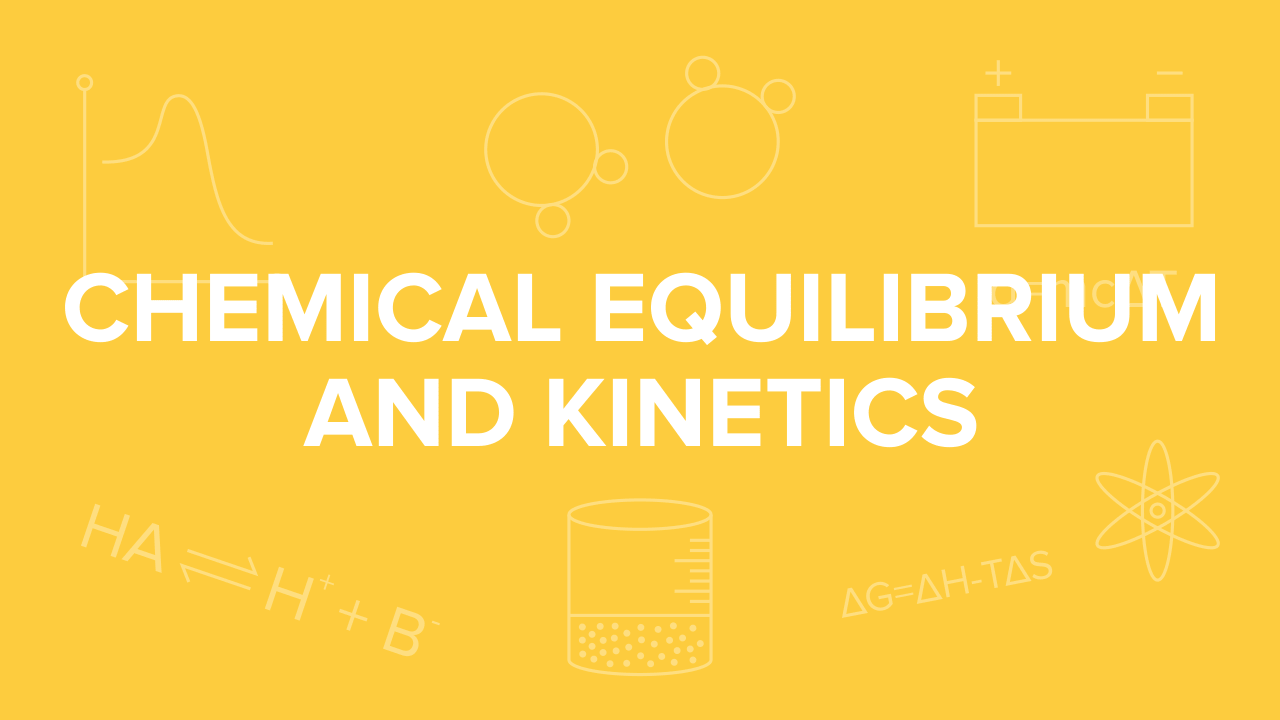Chemical Equilibrium and Kinetics for the MCAT: Everything You Need to Know
/Learn key MCAT concepts about chemical equilibrium and kinetics, plus practice questions and answers
(Note: This guide is part of our MCAT General Chemistry series.)
Table of Contents
Part 1: Introduction to chemical equilibrium and kinetics
Part 2: Reaction equilibria
a) Equilibrium constant and reaction quotient
b) Le Chatelier’s principle
c) Bicarbonate buffer system
Part 3: Rate laws
a) Reaction orders
b) Determining rate laws from experimental data
c) Arrhenius equation
Part 4: Transition state theory
a) Reaction coordinate diagrams
b) Thermodynamic and kinetic products
Part 5: High-yield terms
Part 6: Passage-based questions and answers
Part 7: Standalone questions and answers
-----
Part 1: Introduction to chemical equilibrium and kinetics
How quickly do reactants in a chemical reaction turn into products? Instead of reactants becoming products, does the reaction ever proceed in the opposite direction—turning products into reactants?
In this guide, we will be focusing on chemical equilibrium and kinetics. Equilibrium and kinetics govern the speed and direction of many biological processes. As a result, many of the topics presented here go hand-in-hand with other MCAT topics. For example, you’ll likely notice that our discussion on transition state theory goes hand in hand with our biochemistry article on enzymes.
Throughout this guide, there will be several important terms highlighted in bold. These terms will also be listed together at the end of the guide. We’ve also included several AAMC-style practice questions, so you can test and apply your knowledge.
Let’s get started!
-----
Part 2: Reaction equilibria
a) Equilibrium constant and reaction quotient
Certain chemical reactions known as reversible reactions can progress either forwards or backward. In other words, these reactions are able to progress “forwards,” creating products from the reactants, and also progress “backwards,” creating reactants from the products.
How does a reversible chemical reaction “decide” to progress towards the products or reactants? Imagine a chemical reaction as a see-saw with reactants on one side and the products on the other. When this see-saw is balanced, the reaction has achieved equilibrium. At this point, the forward reaction and the reverse reaction are proceeding at the same rate. Note that this does not mean that there is no progression of the forward and reverse reactions—rather, it implies that the rates at which these two reactions are equal.
Note that in the above expression, the square brackets ([ ]) denote the concentration of a certain chemical species. Lowercase letters (a, b, c, d) are stoichiometric coefficients. A reaction’s equilibrium position may be changed depending on environmental conditions, such as the temperature of the environment and the presence of any catalysts. Therefore, Keq can change if the temperature is changed.
In chemistry, the capital letter “K” almost always denotes an equilibrium constant. This includes the acid dissociation constant, Ka; the base dissociation constant, Kb; and even the Michaelis constant, Km. For instance, you may recall learning about the acid dissociation constant, Ka. A high Ka value indicates that the acid is strong. Let’s take a look at the Ka expression for the dissociation of acid, represented as HA ⇋ H+ + A-:
Since stronger acids dissociate more readily, the dissociation reaction of a strong acid favors the products. Thus, the resulting Ka value is higher.
Another important variable is the reaction quotient, Q. The definition of Q is virtually identical to that of Keq:
While Keq utilizes the concentrations of species at equilibrium, Q tells us the reaction’s current position. Thus, if Q is equal to Keq, then the reaction is at equilibrium. However, if Q is less than Keq, it has not yet achieved equilibrium, and the reaction will proceed forward (towards the products). If Q is greater than Keq, then the reaction has gone past equilibrium and will proceed in the reverse direction (towards the reactants).
b) Le Chatelier’s principle
Le Chatelier’s principle describes how much a reaction favors the products or reactants under different environmental conditions. In other words, the principle describes how an equilibrium position shifts.
When exposed to stress, a system will shift to relieve that stress and re-establish equilibrium. In this context, stress is any sort of change in chemical concentration or environmental conditions, including temperature, pressure, or volume.
A chemical reaction will shift to the right if the concentration of reactants is increased or the concentration of products is decreased.
When the temperature is changed, the direction in which the reaction shifts depends on whether heat is a reactant or product. In an endothermic reaction, heat acts as a reactant, whereas in an exothermic reaction, heat acts as a product. Therefore, if we have an endothermic reaction and the temperature is increased, our reaction shifts right.
When the pressure is changed, the directionality of the resulting shift depends on the number of moles of gas on either side of the reaction. Increasing the pressure of a system will shift the reaction to the side of fewer moles of gas, whereas decreasing the pressure will shift it to the side of greater moles of gas. If we have more moles of reactants than products, an increase in pressure will shift the reaction right. This may also be rationalized through the ideal gas law (PV = nRT). This equation tells us that as pressure increases, so does the number of moles. Therefore, the system alleviates this by shifting the reaction towards the side with fewer moles.
c) Bicarbonate buffer system
The previously discussed concepts are foundational for one of the most essential systems in your body: the bicarbonate buffer system. The action of the bicarbonate buffer system can be expressed using the following chemical equation:
Gain instant access to the most digestible and comprehensive MCAT content resources available. 60+ guides covering every content area. Subscribe today to lock in the current investments, which will be increasing in the future for new subscribers.


